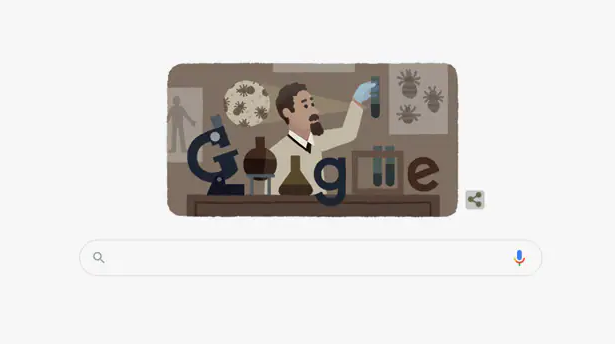

Google celebrated today the 138th anniversary of Rudolf Weigl, a Polish doctor and inventor. He was the inventor of an effective vaccine that could be used against the most serious and oldest infectious diseases, epidemic typhus.
The search engine’s doodle depicts the Polish inventor holding a tube of test in his hands, and drawing lice on the wall. Google has been spelled by the illustrator with a microscope and beakers of bunsen burners.
Rudolf Stefan Weigl was a Czech-born Austro-Hungarian citizen who was born in Przerow (modern-day Czech Republic) on September 2, 1883. He continued his studies at Lwow University in Poland and was appointed in 1914 as a parasitologist in Poland’s Army. He became determined to stop the spread of typhus in Eastern Europe, where millions were affected.
The typhus-infecting bacteria Rickettsia Prowazekii was known to be carried by body lice. So the inventor made a laboratory specimen from the tiny insect.
His groundbreaking research showed how lice can be used to spread the deadly bacteria, which he had been studying for many decades in the hopes of creating a vaccine. Rudolf Weigl successfully inoculated his first beneficiary with his vaccine in 1936.
In 1942, Germany invaded Poland and Mr Weigl was forced into opening a vaccine manufacturing plant. This facility was used by Weigl to hire colleagues and friends who were at risk of being persecuted under the new regime.
His direct efforts to help his neighbors and the thousands of vaccines that were distributed throughout the country saved an estimated 5,000 lives.
Rudolf Weigl, a brilliant scientist and hero, is highly regarded today. Two Nobel Prize nominations have been made for his work.







